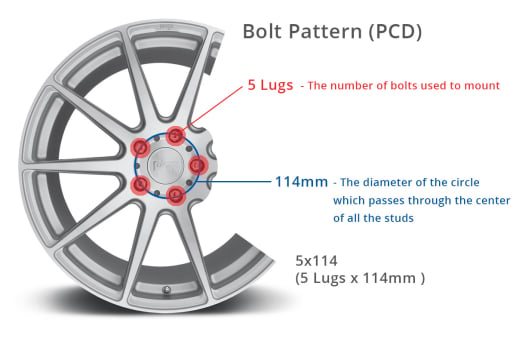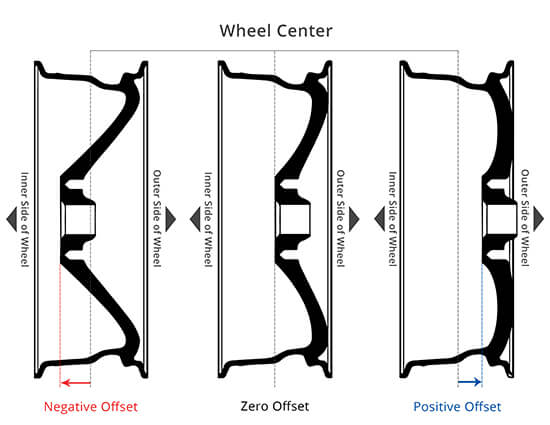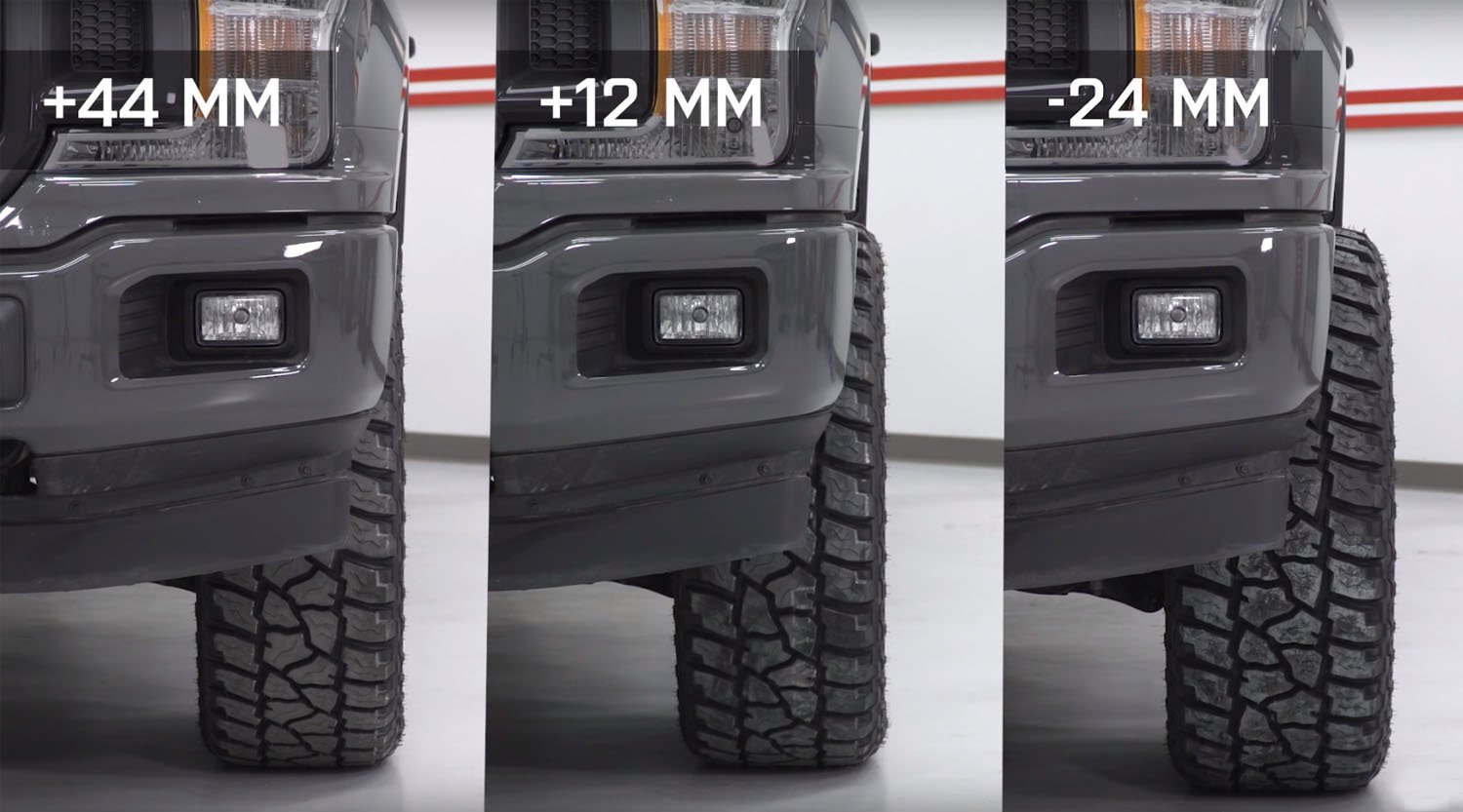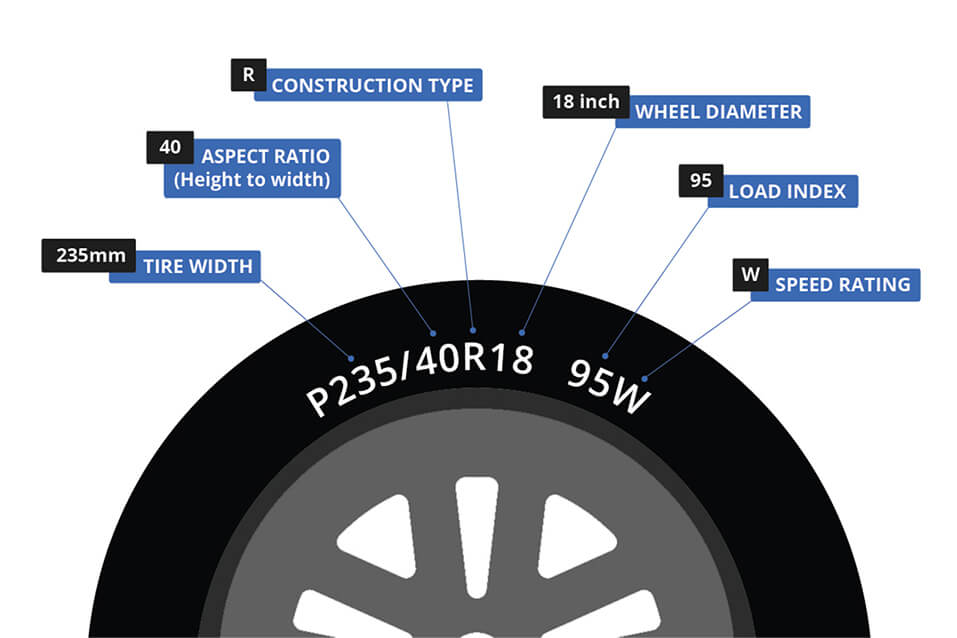WHEEL BUYER'S GUIDE
FIRST-TIME
WHEEL BUYER’S GUIDE
BASIC TERMS USED
IN THE WHEEL AND TIRE INDUSTRY
Before you can buy wheels and tires for your car, you have to know what will fit on your ride. The industry uses many special terms to describe the different physical aspects of wheels and tires. You may find wheels that you really like, only to discover that they don’t fit. It is better to know whether a wheel and tire package will work on your car before you buy.
Once you know the special terms used and what they mean, you can shop for wheels and tires like a pro.
1. WHEELS
Let’s start by discussing the important terms used in the wheel industry. Your wheels will probably be one of the most expensive upgrades you will make to your car, so you want to make sure that when you buy new wheels they fit right.

about wheels are the barrel,
the lip, and the center-disc.
THE CENTER CAP
Is a decorative disk on a wheel that covers a central portion of the wheel. Early center caps for automobiles were small and primarily served the purpose of keeping dirt away from the spindle nut and wheel bearings of vehicles.
THE CENTER DISK
Includes the spokes, the center bore, and the mounting pad where the wheel bolts on the car or truck.
THE LIP
Refers to the outer edge of the wheel that includes the flange the tire mounts to. This is where the tire valve stem installs also.
THE BARREL
Is the section between the face and the back of the rim the tire mounts to.

20x8.5” / Diameter(inch) x
Width(inch)
WHEEL DIAMETER
Wheels are sized according to the number of inches they measure at the diameter of the face of the wheel. So, a 20 wheel is 20 inches across the face or lip. Common sizes measure from 15 inches to 22 inches. Most cars will require some modification to get wheels bigger than 22 inches to fit.
WHEEL WIDTH
The width of the wheels is also typically listed in inches. The width refers to the size of the barrel. Wider wheels allow for wider tires, but too wide of tires will cause them to rub on fenders, suspension parts, and other obstacles. Common wheel width sizes start at around 7 inches wide and go well beyond 10.5 inches wide.

(PCD)
When you hear the term Bolt Pattern (PCD = Pitch Circle Diameter) you should remember that it refers to the shape and size of the studs that hold your wheels on your car. You will typically see bolt spacing referred to by the number of bolt holes and the distance between them at the farthest point measured in inches or millimeters. It is common to have 4, 5, 6, or 8 bolt holes.
You will also see more bolt holes on trucks, many of which have 10 holes for bolting wheels securely. Usually the Bolt Pattern (PCD) will be listed as Number of Bolt Holes x Distance between Bolt Holes(mm). For example, 5×114 or 6×139 or 8×180. The mounting pad is where the lug studs pass through the wheels. This part will also include the spokes, which will connect to the lip and barrel making one strong unit. The bolt pattern MUST match the pattern on the axle hub.

Some wheels have different offsets from factory wheels. An offset allows the wheel to mount farther into the wheel well or to protrude more from the fender. Offset is referred to as positive, negative, or zero. A positive offset wheel moves the wheel farther into the wheel well. Offset is measured in millimeters and is expressed from the center point of the barrel. Many front wheel drive cars use positive offset wheels. A negative offset wheel will allow the assembly to extend beyond the fender lip by moving the mounting point behind the center of the barrel. Like positive offset, negative offset is measured in millimeters. A zero offset wheel places the mounting pad at the center of the barrel.



2. TIRES
It seems like tires should be pretty straight-forward. I mean, they are nothing more than round rubber, right? Tires are much more complex than most people realize. Your vehicle may seem like a totally different vehicle just by switching tires. You don’t even have to change sizes. The way tires are made, the particular compounds of rubber used, and the pattern of the tread make significant changes to the way your vehicle handles.
Terms Used to Describe Tires The most common terms you need to know about tires are the sidewall, the tread, and the bead. Explained simply, the sidewall connects the tread to the bead. The bead mounts the tire to the wheel. The tread provides traction and durability. You will find the tire size information on the sidewall.

DECODING TIRE SIZE: P235/40R18
The tread on this tire is 235mm wide.
The sidewall is 40% of the tread width. It is a radial passenger tire for a 18 inch wheel.
Tires use a standardized system of measuring. Passenger cars and many light trucks use a standard known as P-Metric. This is the most common standard for measuring tires.
The first number will begin with the letter P and a number. The number is the width of the tread in millimeters. Wider tires will require wider rims. The second number is the sidewall height. This number is an aspect ratio. What that means is that the sidewall will be a proportion of the width of the tread. A larger number indicates a taller sidewall. The third number will typically be preceded by the letter R- which stands for radial. That will be explained later. The number that follows will be the size of the rim the tire is designed for, expressed in inches.
3. CHEK THE TECH
TPMS (Tire Pressure Monitoring Sensors) compatibility is also important.
Equipped in most latest vehicles, the TPMS in your car should be programmed before installation. AudioCityUSA provides pre-programmed service for your TPMS purchase.
GOING BIGGER
Many people want to upgrade their wimpy wheels for larger ones. The best way to do this is to buy a wheel and tire package that measures the same overall size as original. If you buy wheels two inches bigger, you will need to find tires that have a two inches lower sidewall. If you are not sure you can go with a specific size that you want, do not hesitate to contact us. Team AudioCityUSA is right here to solve your concern!
NOW THAT YOU KNOW
These terms and descriptions will make it much easier to shop for wheel and tire packages for your car. You will know what the different numbers mean and you can find wheels and tires that will fit your car. This is much of the basic information that you will need. Now shop with us following the vehicle filter!
We will make it easy to find out your wheel for you.


